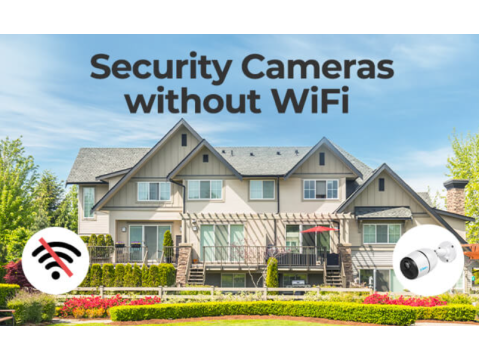Offline Surveillance Solutions for Your Country House
For many country house owners, ensuring the safety of their property can be challenging, especially when no internet connection is available. While many guides focus on 3G or 4G-enabled systems, this article explores solutions for offline surveillance, ensuring security even in remote areas without cellular or broadband connectivity.
Using a DVR for Offline Surveillance
A Digital Video Recorder (DVR) offers a classic approach to surveillance by connecting multiple cameras to store footage locally on a hard drive. While you won't have remote access, the system provides a reliable way to maintain video archives.
Key Steps for Setting Up a DVR
Placement and Security:
- Install the DVR in a secure location, such as a metal safe or a hidden compartment, to prevent tampering or theft.
- Protect power cables and camera connections to ensure continuous recording even during a break-in.
Camera Placement:
- Focus on key areas like the property perimeter, entry points, and vulnerable zones.
- Avoid creating "blind spots" by overlapping camera views.
Cost Efficiency:
- While covering the entire property can be expensive, perimeter surveillance often suffices. Strategically placed cameras can monitor likely entry routes.
Cameras with Memory Card Recording
An alternative to a DVR is using cameras equipped with memory card slots. These cameras store footage on SD or microSD cards, making them a cost-effective and straightforward solution.
Advantages of Memory Card Cameras
- Compact and Independent: Ideal for smaller properties or single-point monitoring.
- Motion Detection: With a built-in motion sensor, these cameras only record when activity is detected, conserving memory.
Key Considerations
- Storage Capacity:
- Most cameras support SD cards up to 256 GB, providing several days of footage when using motion-triggered recording.
- Maintenance:
- Regularly clear old recordings and disable the camera during visits to prevent unnecessary storage use.
Practical Applications
- Use indoors to monitor the house while you're away.
- Focus outdoor cameras solely on the property, avoiding public areas to extend storage time.
Addressing Connectivity Challenges
If some form of cellular coverage is available, consider installing a GSM-based security system. These systems can send alerts and images via SMS or MMS, offering a basic but effective way to monitor activity without a live video feed.
Tips for Effective Offline Surveillance
- Hide Equipment: Conceal cameras and DVR units to prevent tampering.
- Power Considerations:
- Use uninterrupted power supplies (UPS) to keep systems running during outages.
- Opt for cameras with battery backups if frequent power interruptions occur.
- Regular Checks: Periodically inspect cables, connections, and memory storage to ensure optimal performance.
Conclusion
Offline surveillance systems offer practical and reliable solutions for securing country houses in areas without internet connectivity. Whether using a DVR setup or memory card cameras, these options ensure peace of mind and protect your property from potential threats. Explore these strategies to create a customized security solution tailored to your needs.

